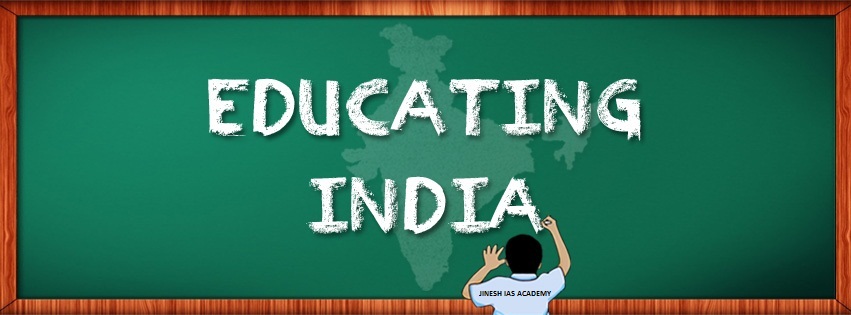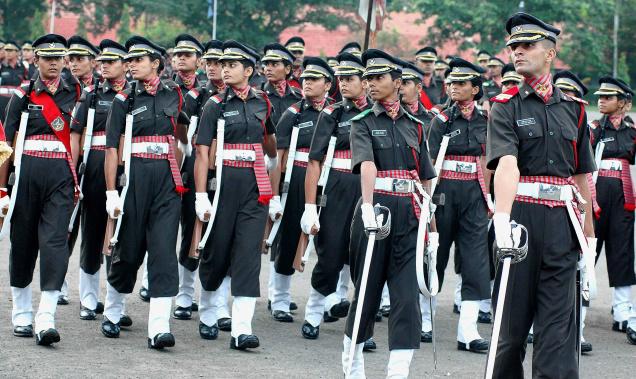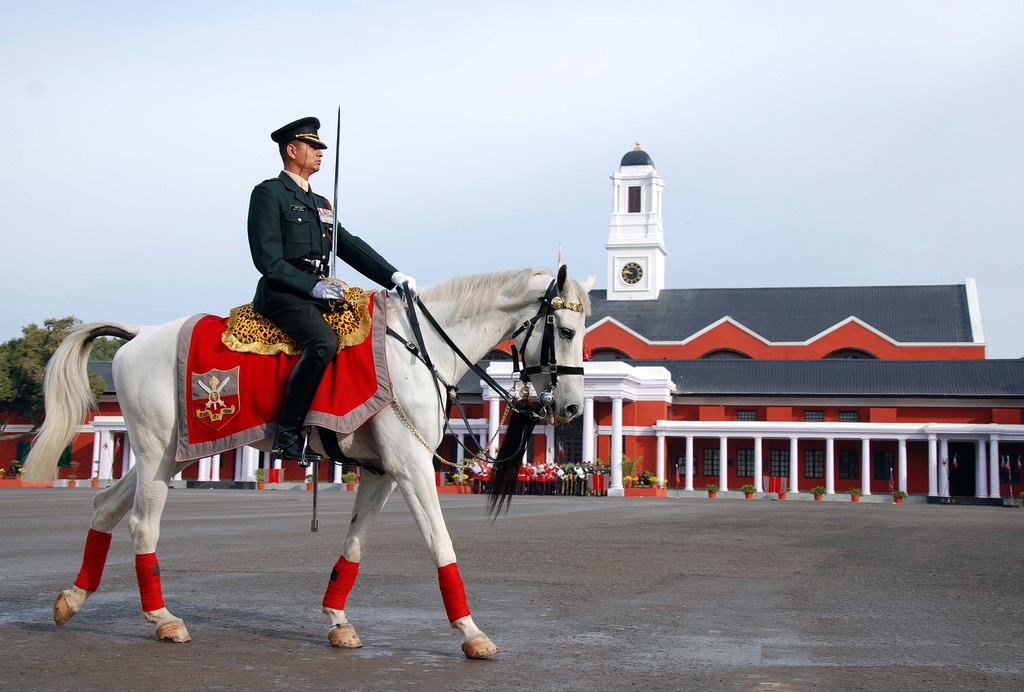The Staff Selection Commission makes recruitment to non-technical group ‘C’ and group ‘B’ non gazetted posts in Ministries/ Departments, the attached and subordinate offices of the Government of India and the C.A.G and the offices of the Accountant General.
The exams conducted by SSC are:
a) SSC COMBINED GRADUATE LEVEL EXAM
b) SSC CPO
c) SSC CHSL (10+2) LDC AND DEO
d) SSC MULTI TASKING STAFF
e) SSC CONSTABLE AND GD
f) SSC JUNIOR ENGINEER
g) SSC COMBINED GRADUATE LEVEL PRELIMS EXAM
SSC CGL
The Staff Selection Commission (SSC) conducts the Combined Graduate Prelims Exam once a year for selection of candidates for the main Examination.
THIS EXAMINATION IS CONDUCTED FOR RECRUITMENT TO VARIOUS SUBORDINATE SERVICES LIKE
(A) Assistants in Ministries/Departments, Attached and Subordinate office of the Govt. of India.
(B) Inspectors of Central Excise & Customs.
(C) Inspectors of Income Tax.
(D) Preventive Officers in Customs.
(E) Examiner in Customs.
(F) Sub-Inspectors in Central Bureau of Narcotics & CBI.
(G) Assistant Enforcement Officer in Directorate of Enforcement, Department of Revenue.
(H) Divisional Accountant, Jr. Accountant, Auditor & UDCs in various offices of Govt. of India.
(I) Auditor Offices under C&AG, CGDA ,CGA & others.
(J) Accountant/ Junior Accountant.
(K) Tax Assistant in CBDT and CBEC.
(L) Compiler in Registrar General of India.
SSC GRADUATE PRELIMS EXAM ELIGIBILITY CRITERIA
Age: The age of a Candidate must lie between
(a) 20 to 27 years for Assistant Grade & SIs in CBI
(b) 18 to 27 years for inspectors of CE/IT & Div. Acctts/Auditors/UDCs, etc.
(c) 20 to 25 years for SIs in CPOs on the first day of August of the year of Examination.
The upper age limit may be relaxed in case of Scheduled Castes, Scheduled Tribes, Other Backward Classes and few such other reserved categories.
EDUCATIONAL QUALIFICATION
DESIRABLE QUALIFICATION FOR-
i) Compiler : Bachelor’s Degree from any recognized University with Economics or Statistics or Mathematics as compulsory or Elective subject.
ii) Statistical Investigator Grade – II: Bachelor’s Degree in any subject from a recognized University or Institute with at least 60% in Mathematics at 12th standard level.
OR
Bachelor’s Degree in any subject with Statistics as one of the subjects at degree level.
iii) All other Posts: Bachelor’s Degree from a recognized University or equivalent.
SSC CGL Exam Pattern
Staff Selection Commission (SSC) has organized a Combined All India Open Examination for recruitment to various Posts in Government Departments for which Graduation is the minimum qualification. Exam pattern and syllabus of SSC CGL Tier 1, Tier 2, Tier 3 exam is discussed here.
The Examination will be conducted in four tiers as indicated below :
- Tier -I — Written Examination (Computer Based)
- Tier -II — Written Examination (Computer Based)
- Tier -III — Descriptive Test (Pen and Paper Mode)
- Tier -IV — Data Entry Skill Test(DEST)/Computer Proficiency Test(CPT) (wherever applicable)/ Document Verification
- Candidates who cleared Combined Cut Off Marks of Tier 1 & Tier 2 will be forwarded to Tier 3 Exam.
- Candidates have to attain 33% Marks in Tier III Exam to qualify for Tier IV exam i.e. Data Entry Skill Test (DEST) /Computer Proficiency Test (CPT).
- The final merit of the successful candidates would be determined on the basis of total score obtained by them in Tier-I, Tier-II and Tier-III.
SSC CGL 2017 TIER 1 PATTERN & SYLLABUS
CGL Tier I Exam Pattern :- It is an objective Type Online Exam. Interesting fact about CGL is that there is No sectional Cut Off…….Check Exam Pattern Below…….
|
Parts |
Subject |
Questions |
Marks |
|
A |
General Intelligence & Reasoning |
25 |
50 |
|
B |
General Awareness |
25 |
50 |
|
C |
Quantitative Aptitude |
25 |
50 |
|
D |
English Comprehension |
25 |
50 |
So There are 100 questions consisting of 200 Marks.
- Time Duration is 75 minutes(1:15 hours) for 100 questions.
- There will be negative marking of 50 marksfor each wrong answer in Tier-I Exam.
NOTE : “Final Merit will be drawn based on Marks of Tier 1, Tier II, Tier III (Descriptive Type Paper). There will be NO Sectional Cut Off in Tier 1.”
SSC CGL Tier I Exam Syllabus :-
General Intelligence & Reasoning : It would include questions of both verbal and non-verbal type. This component may include questions on analogies, similarities and differences, space visualization, spatial orientation, problem solving, analysis, judgement, decision making, visual memory, discrimination, observation, relationship concepts, arithmetical reasoning and figurative classification, arithmetic number series, non-verbal series.
Coding and decoding, statement conclusion, syllogistic reasoning etc. The topics are, Semantic Analogy, Symbolic/Number Analogy, Figural Analogy, Semantic Classification, Symbolic/Number Classification, Figural Classification, Semantic Series, Number Series, Figural Series, Problem Solving, Word Building, Coding & de-coding, Numerical Operations, symbolic Operations, Trends, Space Orientation, Space Visualization.
Venn Diagrams, Drawing inferences, Punched hole/pattern –folding & unfolding, Figural Pattern – folding and completion, Indexing, Address matching, Date & city matching, Classification of centre codes/roll numbers, Small & Capital letters/numbers coding, decoding and classification, Embedded Figures, Critical thinking, Emotional Intelligence, Social Intelligence, Other sub-topics, if any.
General Awareness : Questions in this component will be aimed at testing the candidates general awareness of the environment around him and its application to society. Questions will also be designed to test knowledge of current events and of such matters of every day observations and experience in their scientific aspect as may be expected of any educated person. The test will also include questions relating to India and its neighbouring countries especially pertaining History, Culture, Geography, Economic Scene, General Policy & Scientific Research.
Quantitative Aptitude : The questions will be designed to test the ability of appropriate use of numbers and number sense of the candidate. The scope of the test will be computation of whole numbers, decimals fractions and relationships between numbers, Percentage, Ratio & Proportion, Square roots, Averages, Interest, Profit and Loss, Discount, Partnership Business, Mixture and Allegation, Time and distance, Time & Work, Basic algebraic identities of School.
Algebra & Elementary surds, Graphs of Linear Equations, Triangle and its various kinds of centres, Congruence and similarity of triangles, Circle and its chords, tangents, angles subtended by chords of a circle, common tangents to two or more circles, Triangle, Quadrilaterals, Regular Polygons , Circle, Right Prism, Right Circular Cone, Right Circular Cylinder, Sphere, Hemispheres, Rectangular Parallel0piped, Regular Right Pyramid with triangular or square base, Trigonometric ratio, Degree and Radian Measures, Standard Identities, Complementary angles, Heights and Distances, Histogram, Frequency polygon, Bar diagram & Pie chart.
English Comprehension : Candidates’ ability to understand correct English, his basic comprehension and writing ability, etc. would be tested. Questions will be based on will be based onspot the error, fill in the blanks, synonyms, antonyms, spelling/detecting mis-spelt words, idioms & phrases, one word substitution, improvement of sentences.
New Pattern for English Question will be as :-
- Sentence Improvement : 03 Marks
- Error Correction : 03 Marks
- Fill in the Blank : 03 Marks
- One Word Substitution : 03 Marks
- Idiom/ Phrases : 03 Marks
- English Comprehension : 05 Marks
- Antonym/ Synonym/ Spellings : 05 Marks
NOTE:- Tier-I examination is used to screen the candidates for appearing in Tier-II exam for various papers which will be specifically required for different groups of posts. Marks of such screened candidates in Tier-I will be taken into account for final ranking of candidates for selecting them for the interview/skill test and also final selection.
SSC CGL 2016 TIER 2 PATTERN & SYLLABUS
TIER II PATTERN:- It will also be Objective Type Online Paper.
|
PAPER |
Subject |
Questions |
Marks |
|
IV |
General Studies |
100 (60+40) |
200 |
|
III |
Statistics |
100 |
200 |
|
I |
Quantitative Abilities |
100 |
200 |
|
II |
English Language & Comprehension |
200 |
200 |
- Time Duration is 120 minutes (2 Hour) for Each of the Papers.
- There will be negative marking of 0.25 marks in Paper-II and 0.50 marks in Paper-I and Paper-III for each wrong answer.
NOTE:- Paper-I & II are compulsory for all the categories of posts. Paper-III is only for those candidates who apply for the post of Statistical Investigator Gr.II & Compiler & Paper IV is only for Assistant Audit Officer..
- Paper-IVwill be for those candidates who have applied for the post of Assistant Audit Officer (AAO) in C&AG. The said paper would comprise two parts i.e., Finance and Accounts for which there would be 40 questions carrying 80 marks and Economics and Governance which would have 60 questions carrying 120 marks. In all there would be 100 questions carrying 200 Marks with each question carrying two marks.
SSC CGL 2016 Tier 2 Syllabus:-
Paper-I ► Quantitative Ability : The questions will be designed to test the ability of appropriate use of numbers and number sense of the candidate. The scope of the test will be the computation of whole numbers, decimals ,fractions and relationships between numbers, Percentage. Ratio & Proportion,Square roots, Averages, Interest, Profit and Loss, Discount, Partnership Business, Mixture and Alligation, Time and distance, Time & Work.
Basic algebraic identities of School Algebra & Elementary surds, Graphs of Linear Equations, Triangle and its various kinds of centres, Congruence and similarity of triangles, Circle and its chords, tangents, angles subtended by chords of a circle, common tangents to two or more circles, Triangle, Quadrilaterals, Regular Polygons , Circle.
Right Prism, Right Circular Cone, Right Circular Cylinder, Sphere, Hemispheres, Rectangular Parallelepiped, Regular Right Pyramid with triangular or square base, Trigonometric ratio, Degree and Radian Measures, Standard Identities, Complementary angles, Heights and Distances, Histogram, Frequency polygon, Bar diagram & Pie chart
Paper-II ► English Language & Comprehension: Questions in this components will be designed to test the candidate’s understanding and knowledge of English Language and will be based on spot the error, fill in the blanks, synonyms, antonyms, spelling/detecting mis-spelt words, idioms & phrases, one word substitution, improvement of sentences, active/passive voice of verbs, conversion into direct/indirect narration, shuffling of sentence parts, shuffling of sentences in a passage, cloze passage & comprehension passage.
Paper-III ► Statistics for Investigator Grade-II:
Collection Classification and Presentation of Statistical Data – Primary and Secondary data, Methods of data collection; Tabulation of data; Graphs and charts; Frequency distributions; Diagrammatic presentation of frequency distributions.
Measures of Central Tendency– Common measures of central tendency – mean median andmode; Partition values- quartiles, deciles, percentiles.
Measures of Dispersion– Common measures dispersion – range, quartile deviations, mean deviation and standard deviation; Measures of relative dispersion.
Moments, Skewness and Kurtosis – Different types of moments and their relationship; meaning of skewness and kurtosis; different measures of skewness and kurtosis.
Correlation and Regression – Scatter diagram; simple correlation coefficient; simple regression lines; Spearman’s rank correlation; Measures of association of attributes; Multiple regression; Multiple and partial correlation (For three variables only).
Probability Theory – Meaning of probability; Different definitions of probability; Conditional probability; Compound probability; Independent events; Bayes’ theorem.
Random Variable and Probability Distributions – Random variable; Probability functions; Expectation and Variance of a random variable; Higher moments of a random variable; Binomial , Poisson, Normal and Exponential distributions; Joint distribution of two random variable (discrete).
Sampling Theory – Concept of population and sample; Parameter and statistic, Sampling and non-sampling errors; Probability and non-probability sampling techniques(simple randomsampling, stratified sampling, multistage sampling, multiphase sampling, cluster sampling, systematic sampling, purposive sampling, convenience sampling and quota sampling); Sampling distribution(statement only); Sample size decisions.
Statistical Inference – Point estimation and interval estimation, Properties of a good estimator, Methods of estimation (Moments method, Maximum likelihood method, Least squares method), Testing of hypothesis, Basic concept of testing, Small sample and large sample tests, Tests based on Z, t, Chi-square and F statistic, Confidence intervals.
Analysis of Variance – Analysis of one-way classified data and two-way classified data.
Time Series Analysis – Components of time series, Determinations of trend component by different methods, Measurement of seasonal variation by different methods.
Index Numbers – Meaning of Index Numbers, Problems in the construction of index numbers, Types of index number, Different formulae, Base shifting and splicing of index numbers, Cost of living Index Numbers, Uses of Index Numbers.
Paper IV ► General Studies (Finance and Economics) for the post of Assistant Audit Officer in Indian Audit & Accounts Department under CAG.
Part A: Finance and Accounts – (80 marks)
1. Fundamental principles and basic concept of Accounting. Financial Accounting: Nature and scope, Limitations of Financial Accounting, Basic concepts and Conventions, Generally Accepted Accounting Principles.
Basic concepts of accounting : Single and double entry, Books of original Entry, Bank Reconciliation, Journal, ledgers, Trial Balance, Rectification of Errors, Manufacturing, Trading, Profit & loss Appropriation Accounts, Balance Sheet Distinction between Capital and Revenue Expenditure, Depreciation Accounting, Valuation of Inventories, Non-profit organisations Accounts, Receipts and Payments and Income & Expenditure Accounts, Bills of Exchange, Self Balancing Ledgers.
Part B: Economics and Governance – (120 marks)
2. Comptroller & Auditor General of India- Constitutional provisions, Role and responsibility.
- Finance Commission-Role and functions.
- Basic Concept of Economics and introduction to Micro Economics Definition, scope and nature of Economics, Methods of economic study and Central problems of an economy and Production possibilities curve.
- Theory of Demand and Supply Meaning and determinants of demand, Law of demand and Elasticity of demand, Price, income and cross elasticity; Theory of consumer’s behaviour-Marshallian approach and Indifference curve approach, Meaning and determinants of supply, Law of supply and Elasticity of Supply.
- Theory of Production and cost Meaning and Factors of production; Laws of production- Law of variable proportions 22 and Laws of returns to scale.
- Forms of Market and price determination in different markets Various forms of markets-Perfect Competition, Monopoly, Monopolistic Competition and Oligopoly ad Price determination in these markets.
- Indian Economy Nature of the Indian Economy Role of different sectors-Role of Agriculture, Industry and Services-their problems and growth; National Income of India-Concepts of national income, Different methods of measuring national income
Population -Its size, rate of growth and its implication on economic growth Poverty and unemployment- Absolute and relative poverty, types, causes and incidence of unemployment Infrastructure-Energy, Transportation, Communication. - Economic Reforms in India Economic reforms sice 1991; Liberalisation, Privatisation, Globalisation and Disinvestment.
- Money and Banking Monetary/ Fiscal policy- Role and functions of Reserve Bank of India; functions of commercial Banks/RRB/Payment Banks Budget and Fiscal deficits and Balance of payments Fiscal Responsibility and Budget Management Act, 2003.
- Role of Information Technology in Governance.
TIER III Exam
An additional stage of Examination, i.e. Tier-III, has been introduced w.e.f. CGLE, 2016. Details about Tier III Exam is given below……….
- Tier III would be a Descriptive type paper of 100 marks in Pen and Paper mode.
- The duration of the paper would be one hour (60 Minutes).
- This paper has been introduced to assess the writing skills of the candidates which is necessary in Government jobs.
- The Paper would comprise writing of an Essay/ Passage of 250 words and Letter /Application Writing of approximately 150 words.
- The qualifying marks in Tier-III would be 33 per cent.The paper will have to be written either in Hindi or in English. Part paper written in Hindi and Part in English will not be evaluated. The questions in this paper would be of 10+2 standard.
Tier-IV of the Examination would continue to be the Data Entry Skill Test (DEST) /Computer Proficiency Test (CPT) which would be of a qualifying nature.

 WHAT IS NDA?
WHAT IS NDA? Services Selection Board, commonly known as ‘SSB Interview’, is a Personality and Intelligence Assessment Test is conducted specifically to analyze the potential and compatibility of candidates for commission into the Armed Forces of India as officers. The interview process is usually spread over a span of five days. It consists of a series of scientific and time tested psychological testing techniques.
Services Selection Board, commonly known as ‘SSB Interview’, is a Personality and Intelligence Assessment Test is conducted specifically to analyze the potential and compatibility of candidates for commission into the Armed Forces of India as officers. The interview process is usually spread over a span of five days. It consists of a series of scientific and time tested psychological testing techniques. WHAT IS THE CDS/OTA WRITTEN EXAM?
WHAT IS THE CDS/OTA WRITTEN EXAM?